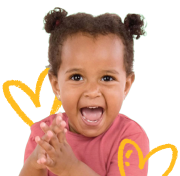One of the most common questions we receive relates to progress on how baby processes, understands and responds to baby sign language. With many parents reporting baby signs as early as five months it can sometimes be perplexing to try to guess is your baby is in the right path.
If you have been diligent in implementing the basics of learning sign language and those around you such as caregivers and other family members are supportive and participative in the learning process chances are baby will begin signing quicker than ever.

Here are some of the most common signs that will help you know if your baby is about to begin using baby sign language:
- Your baby maintains eye contact when you are signing.
- Your baby is emotionally responsive to signs by smiling and other facial expressions.
- Your baby babbles or makes noises when you sign.
- Your baby makes movements with their hands as if attempting to sign.
- Your baby engages with signing material like musical videos and flashcards.
Always keep in mind that each little one has a distinct pace and style of learning. Try different approaches until you discover the one that works best for your baby.
Once a baby has mastered two or three signs you will begin to see very quick progress on how they communicate. Every Monday we share our baby sign language stories on our Facebook page. Join us and tell us about your progress.








